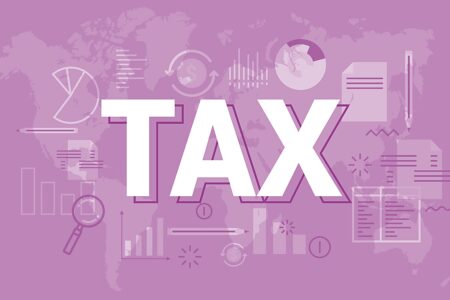Changes which affect workers' services provided through intermediaries (typically the worker's company) in the private sector took effect from 6 April 2021
Updated 19 October 2022
Update
On 17 October the new Chancellor, Jeremy Hunt, announced in his Fiscal Statement that he was overturning former Chancellor Kwasi Kwarteng’s proposals to remove the off-payroll working rules. The rules will now continue in operation.
18 March 2021
For a shorter summary of the following information – read this article in Shipshape Magazine
Background
Since April 2007, where a worker supplied his/her services through an intermediary (typically their own company) in circumstances where, if they had been engaged directly by the client he/she should have been treated as an employee for income tax purposes. In this case the intermediary has had to treat 95% of the fees it receives as the worker’s earning subject to PAYE and NIC. This is known as the ‘IR35’ regime.
HMRC offer the Check Employment Status for Tax (CEST) tool to help to decide the relationship between the worker and the client. This tool is accessible here.
Changes were introduced on 6 April 2017 where the client was a public authority paying for a supply of services by an individual (who personally performs the services for the client through an intermediary). They apply if, had the services been supplied directly by the worker, the worker would be regarded as an employee for income tax purposes.
In this situation, the payment is to be treated as employment earnings, and the ‘fee-payer’ has to deduct tax and NIC under PAYE and pay employer’s NIC – accounting to HMRC with its own payroll. The employment allowance is not given against this NIC.
Changes since April 2021
From 6 April 2021, this extended to clients that are not a public authority, unless they are small (see definition below).
The new rules applied to payments made from 6 April 2021, save those in respect of services supplied before that date. This was until a status determination statement is delivered (by a client who is not small) to the payee and to the contractor advising that they don’t apply.
Seemingly, in the absence of a statement, the default is that payments were to be treated as employment earnings. It is hoped this potential anomaly will be resolved.
The legislation envisages the possibility of a chain of parties between the client and the intermediary.
The client should give the status determination statement [SDS] to both the worker and the immediate person in the chain, who should pass it on so that it reaches the eventual fee-payer (who will be responsible for deducting PAYE etc) if the SDS says that is appropriate, or in the absence of an SDS.
If the fee-payer fails to account for the tax and NIC, HMRC will seek it from the next above the fee-payer in the chain, and so on – with the client finally responsible.
However, this regime is not applicable to payments made by the fee-payer if the worker does not have a ‘material interest’ [broadly, more than 5%] in the intermediary supplying his services, or if any combination of the following factors applies:
- The worker is not resident in the UK, is domiciled outside the UK or meets ‘the requirement of S.26A ITEPA 2003’
- The client is resident outside, or not resident in the UK
- The services are provided outside the UK
The regime also applies if the worker without a material interest in the intermediary, has received a chain payment from the intermediary or has rights which entitle (or would in any circumstances entitle) the worker to receive a chain payment from the intermediary. A ‘chain payment’ is one that can reasonably be taken to be for the worker’s services to the client.
This could mean that the fee-payer has to operate PAYE on any payments made for the worker’s services, even though the intermediary is quite properly deducting PAYE and NIC from the worker’s pay as the intermediary’s employee.
HMRC have been made aware of this issue, and draft clauses to be included in the Finance Act 2021 will remove this possibility.
Definitions under the new rules
S.26A ITEPA 2003 refers to an employee who was non-UK resident for the:
- previous 3 tax years, or
- 3 tax years before the previous tax year, or
- 3 years before the previous two tax years, or
- previous tax year, UK resident for the year before and non-resident for the 3 years before that.
A company or LLP (limited liability partnership) is small if it satisfies at least two of the following requirements:
- Annual Turnover is not more that £10.2 million
- Balance sheet total is not more than £5.1 million
- Number of employees is not more than 50
- If the company is a member of a group, the group must satisfy the tests.
A company or LLP is classified as small for a tax year following the filing date for its first accounting period and subsequently if it qualifies as small on the basis of its turnover etc as above for its last financial year for which the filing date is before the beginning of the tax year. For example, if the company’s accounting date is 31 December and it qualifies as small in 2019, it is small for 2021/22 because the filing date for the accounts for calendar year 2019 falls before 6 April 2021.
Partnerships and Sole Traders
A partnership is ‘small’ for a tax year if its turnover is not more than £10.2 million in the last financial year ending at least 9 months before the beginning of that tax year.
A sole trader is small for a tax year if his or her turnover in the last calendar year before the beginning of that tax year does not exceed £10.2 million.
If requested by the worker or an intermediary, a client must state that it qualifies as small within 45 days of the request or, if later, by 45 days before the start of the tax year affected.
Implications from the changes
The terms of all contracts for services affected will have to be amended to reflect the fact that the client will have to meet the employer’s NIC. They will also need to justify the deduction of the tax and employees’ NIC to be accounted for on the deemed employment earnings.
For corporation tax, the payment received from the client that represents deemed earnings is not required to be brought into account in calculating the profits of the intermediary’s trade.
The intermediary will be responsible for workplace pension contributions, student loan repayments and holiday pay, but the client will be responsible for the apprenticeship levy.
Illustrating how it might operate if the existing rules for the public sector are adopted.
| Adopting 2020/21 rates | ||
|---|---|---|
| Worker’s deemed employment income | £ | £ |
| Intended fee (for year) | 100,000.00 | |
| Discount for employers’ Class 1 NIC 13.8% of [£88,939 less £8,788] [£100,000 less £8,788 = £91,212 x 13.8/113.8] | 11,061.00 | |
| Actual fee (ex VAT) | 88,939.00 | |
| PAYE | ||
| First £12,500 | nil | |
| Next £37,500 @ 20% | 7,500.00 | |
| £38,939 @ 40% | 15,575.60 | |
| NIC (primary Class 1) | ||
| First £8,7882 | nil | |
| Next £41,212 @ 12% | 4,945.44 | |
| £38,939 @ 2% | 778.78 | 28,799.82 |
| Net | 60,139.18 | |
| Actual payment, including VAT @ 20% on £88,939 [£60,139.18 + £17,787.80 being 20% of £88,939] | 77,926.98 | |
| Intermediary | ||
| Expenses, say | 3,000.00 | |
| Salary [or it could be dividend] (tax & NIC free because less than £88,939) | 55,826.38 | |
| Workplace Pension contribution (employer’s) 3% of £50,000 less £6,240) | 1,312.80 | 60,139.18 |
HMRC suggest that the intermediary’s accounts may show its turnover either as (adopting the figures in the illustration above) £88,939 or £60,139. It isn’t clear what description should be used for the £28,800 if the gross figure in adopted.
This summary is based on Schedule 1 Finance Act 2020. However, aspects of the legislation are still under discussion, and changes may be made by Finance Act 2021.
Specific advice should be obtained before taking action, or refraining from taking action, in relation to this summary. If you would like advice or further information, please speak to your usual Shipleys contact or one of our specialists shown on this page.
Detailed guidance can be found in HMRC’s Employment Status Manual – here
Further guidance can be found on the Gov.uk website here and here
Copyright © Shipleys LLP 2021













